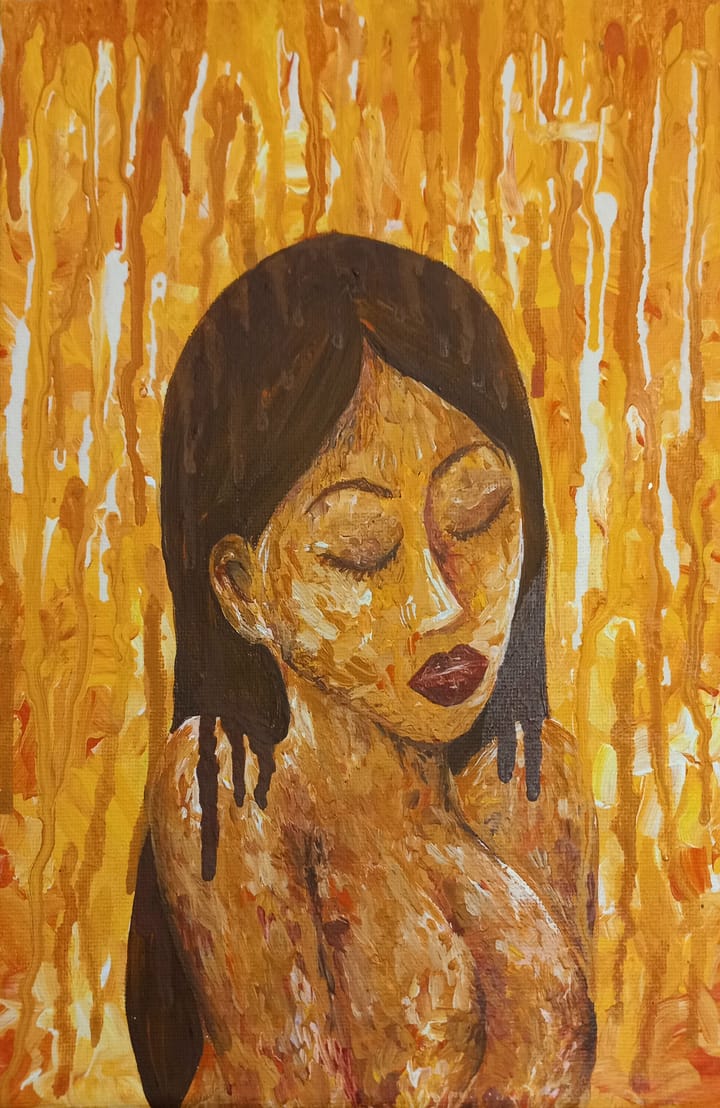“Portrait of a Lady on Fire” Leaves Unforgettable Impact

In the opening scene of “Portrait of a Lady on Fire,” we see the titular portrait — a distanced, nighttime image of a woman who is staring at us while her dress begins to catch flames. The image lasts only for a moment, however, and we are immediately sent on a flashback, helplessly dependent on a retelling of the past. And yet, this helplessness moves us to reach for connection and provokes us to feel. Brief, precious glimpses of a look here and a touch there pull us in while maintaining the space for curiosity.
Through fleeting flashes of images and deafening moments of silence, “Portrait of a Lady on Fire” — orignally in French — renders us helpless and urges us to lean forward. We watch and yearn at the same time, presented with a portrait of love so precious that we are afraid to touch it. Set on a blindingly beautiful island off the coast of France in the late 18th century, the film urges us to partake in the aches of forbidden love and pushes us to recognize the undeniable beauty of an everlasting memory.
Director Celine Sciamma’s mesmerizing “Portrait of a Lady on Fire” tells the story of two young women whose lives become irreversibly intertwined. Marianne (Noémie Merlant) is commissioned to paint a portrait of Héloïse (Adèle Haenel), a portrait that will be presented to Héloïse’s arranged husband-to-be before their official marriage. Héloïse refuses to pose for the portrait as she does not wish to be married, however, so Marianne is then tasked with befriending Héloïse, acting as her hired “walking companion” while secretly observing her features every chance she gets. Their relationship soon becomes more complicated when Héloïse notices Marianne’s gaze and returns it.
While watching the film, I was torn between being lulled by my own helplessness, admiring the film as an observer on the outskirts, and feeling a burning need to impose myself as an unseen force because I cared for the characters so deeply.
It was like my body wasn’t just mine anymore. Why is it that, at the beginning of the film, my toes tightly curled in anticipation as I watched a hooded Héloïse saunter ahead of Marianne, the cloth bouncing up and down with her rough steps? Why did I feel so intensely about a character whose face I hadn’t even seen yet? Why did I feel a bright rush of relief when the hood did indeed fall off, exposing Héloïse’s golden hair, as if I were the one who acted?
The darkness of the theater heightened my tumultuous emotions. Almost blinded by the gleaming white sunshine in the film, aware of my extreme physical removal from such a world, I simply let my senses take over — the dark blue ocean waves and roaring wind. But I also felt emboldened by the darkness. Cocooned in its immensity, I felt no shame in looking at their intimacy onscreen; the intensity of the gaze in the film bore through me, and yet I stared back. Why did I feel I owed it to them to look?
In the scene where Marianne teasingly predicts Héloïse’s actions (“When you’re moved, you … And when you’re embarrassed, you … And when you’re annoyed, you…”) and Héloïse returns with her own whispered predictions, standing so close to Marianne that we can see them trembling, why did I feel seen? Why did I feel the flush of embarrassment and realization?
It was a strange intermingling of Héloïse and Marianne, Marianne and myself, myself and Héloïse. When they experimented with hallucinogens and pressed against each other and Héloïse opens her eyes and they are Marianne’s eyes, I was startled not because of the transformation but because for a moment, I thought they were my own eyes. The film had beckoned me to study those eyes so carefully that I was alarmingly disoriented, uncertain where I ended and Marianne began.
So in the final scene when we see Héloïse at the orchestra, in the same space as Marianne but unaware of her physical presence and feeling her through Vivaldi’s “Summer,” we breathe with her — a new “we,” one less universal and more intimate. “And he is attracted by the cinema because it gives him the illusion of vicariously partaking of life in its fullness,” Siegfried Kracauer writes.
As I saw her chest rise and fall, gently at first and then eventually heaving up and down with great force, I did the same. In that moment, it felt as though the film had emptied and filled me at the same time. I partook of life. I was emptied of myself but filled and entangled with Héloïse’s sensations until I expanded into something larger than the confines of my own body. Fuller than before.
“Portrait of a Lady on Fire” is currently playing at Amherst Cinema.





Comments ()